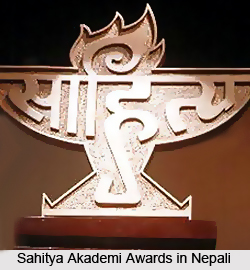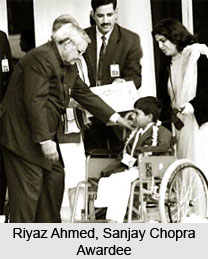 Sahitya Akademi Awards in Nepali language and literature has been accepted in every literary genre, precisely since the year 1977. Nepali though being essentially an extraneous language, was wholly assimilated amongst the 24 recognised Indian regional languages within the India`s National Academy of Letters, the Sahitya Akademi itself. The Akademi is internationally acclaimed for its incredible work in every Indian literature and language structure, also honouring their composers and writers, celebrated in élan for their compositions, aimed towards betterment of humanity.
Sahitya Akademi Awards in Nepali language and literature has been accepted in every literary genre, precisely since the year 1977. Nepali though being essentially an extraneous language, was wholly assimilated amongst the 24 recognised Indian regional languages within the India`s National Academy of Letters, the Sahitya Akademi itself. The Akademi is internationally acclaimed for its incredible work in every Indian literature and language structure, also honouring their composers and writers, celebrated in élan for their compositions, aimed towards betterment of humanity.
Sahitya Akademi Awards in Nepali and the consecutive years, their authors, the genres and of course, their creations are stated as below:
| Year | Book | Author |
| 2007 | Curfew (Plays) | Lakshman Srimal |
| 2006 | Droha (Novel) | Bhim Dahal |
| 2005 | Jeevan Goreto Ma (Novel) | Krishna Singh Moktan |
| 2004 | Shanti Shandeha (Poetry) | Jos Yonjan "Pyasi" |
| 2003 | Athah (Novel) | Bindya Subba |
| 2002 | Udasin Rukhharu (Novel) | Prem Pradhan |
| 2001 | Aahat Anubhuti (Short stories) | Lakhi Devi Sundas |
| 2000 | Nisansmaran (Essays) | Ramlal Adhikari |
| 1999 | Bishaun Shatabdi Ki Monalisa (Short stories) | Bikram Bir Thapa |
| 1998 | Adim Busty (Poetry) | Man Prasad Subba |
| 1997 | Veer Jatiko Amar Kahani (Biographical essays) | Mani Prasad Rai |
| 1996 | Nihsabda (Poetry) | Mohan Thakuri |
| 1995 | Dr. Parasmani Ko Jiwan Yatra (Biography) | Nagendramani Pradhan |
| 1994 | Paryavekshan (Essays) | Jiwan Namdung |
| 1993 | Mrigatrishna (Short stories) | Sanu Lama |
| 1992 | Indra Dhanush (Essays) | R.P. Lama |
| 1991 | Hypocret Champ-Gurans Ra Anya Kavita (Poetry) | Girmee Sherpa |
| 1990 | Aama (Poetry) | Tulsiram Sharma `Kashyap` |
| 1989 | Karna-Kunti (Epic) | Tulsi Bahadur Chhetri |
| 1988 | Usha Manjari (Poetry) | Pushpalal Upadhyaya |
| 1987 | Brahmaputraka Chheu-Chhau (Novel) | Lil Bahadur Chetri |
| 1986 | Chakrabyuha (Short stories) | Sharad Chhetri |
| 1985 | Nilkanth (Novel) | Matsyendra Pradhan |
| 1984 | Samaj Darpan (Epic) | Ramchandra Giri |
| 1983 | Niyati (Novel) | Indra Sundas |
| 1982 | Binsiyako Sanskriti (Essays) | M.M. Gurung |
| 1981 | Naya Kshitij Ko Khoj (Novel) | Asit Rai |
| 1980 | Sunakhari (Novel) | Okima Gwyn |
| 1979 | Maulo (Essays) | Guman Singh Chamling |
| 1978 | Khaharey (Short stories) | Shiva Kumar Rai |
| 1977 | Nepali Upanyas Ka Adharharu (Literary criticism) | Indra Bahadur Rai |






